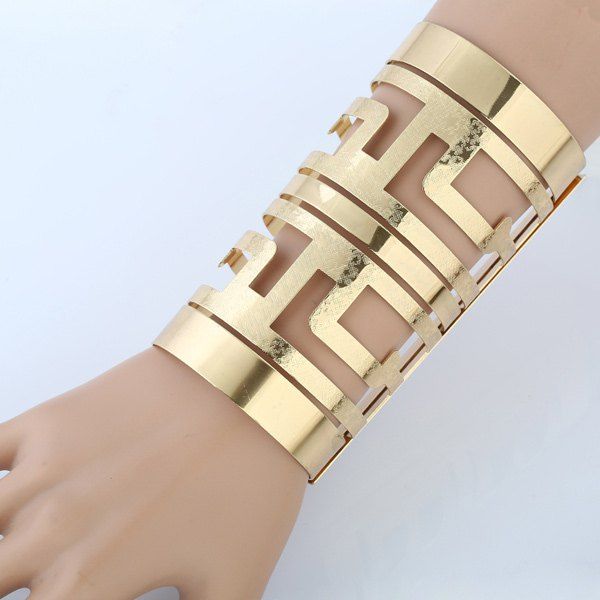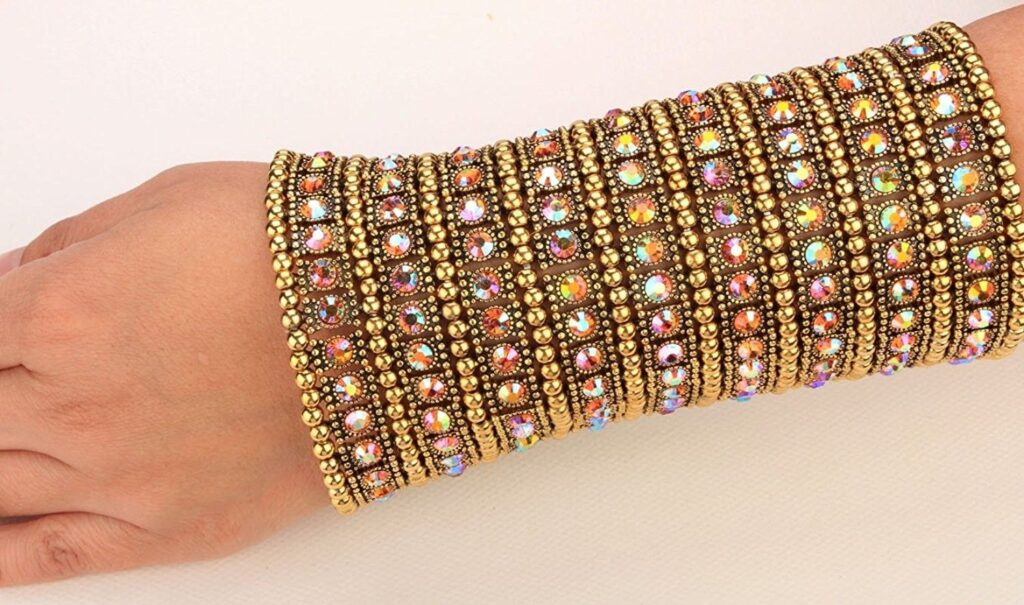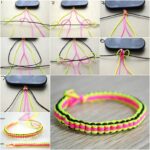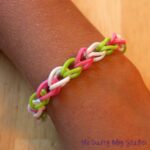The world of jewelry is vast and varied, a glittering landscape filled with countless styles, materials, and names. Navigating this world can be a delightful, albeit sometimes confusing, experience. One particular area that often sparks curiosity is the realm of bracelets. While the term “bracelet” seems straightforward enough, the nuances of bracelet lengths and designs can lead to questions, specifically: What are long bracelets called? This question isn’t as simple as it appears, as the answer depends on several factors, including length, style, and how the bracelet is worn.
Understanding the terminology surrounding long bracelets is important for several reasons. Firstly, it allows for more precise communication when discussing jewelry, whether you’re a collector, a designer, or simply a consumer looking to purchase a piece. Secondly, knowing the correct terms can help you better understand the history and cultural significance of different bracelet styles. Many long bracelets have roots in specific cultures or historical periods, and their names often reflect this heritage. Finally, and perhaps most practically, being familiar with the terminology will make you a more informed shopper, enabling you to find exactly what you’re looking for and avoid potential misunderstandings with jewelers or vendors.

In the contemporary jewelry market, long bracelets are experiencing a resurgence in popularity. They offer a unique opportunity for self-expression, allowing wearers to make a bold statement or subtly enhance their style. Whether it’s a delicate strand of beads that wraps multiple times around the wrist, a chunky chain bracelet that drapes elegantly down the hand, or a charm bracelet laden with personal mementos, long bracelets offer versatility and visual appeal. This increasing demand makes it even more crucial to understand the vocabulary associated with these pieces, empowering consumers to navigate the market with confidence and clarity.
This article will delve into the various names and classifications of long bracelets, exploring the factors that influence their nomenclature and providing a comprehensive guide to understanding this fascinating aspect of jewelry terminology. We will examine different styles, materials, and wearing methods, offering a clear and concise overview to help you confidently identify and appreciate the diverse world of long bracelets. So, let’s embark on this journey to unravel the mysteries of bracelet nomenclature and discover the names behind those captivating, elongated adornments.
Exploring the Terminology: Beyond the Basic “Bracelet”
The term “bracelet” is a broad umbrella encompassing a wide range of wrist ornaments. To differentiate a long bracelet from its shorter counterparts, we need to consider specific terms that highlight its extended length and unique wearing style. While there isn’t one single, universally accepted term for all long bracelets, several terms are commonly used, depending on the specific characteristics of the piece. This section will explore these terms and the factors that influence their usage.
Wrap Bracelets: The Art of Multi-Layered Style
One of the most common terms used to describe long bracelets is “wrap bracelet.” This term specifically refers to bracelets designed to be wrapped multiple times around the wrist. These bracelets can be made from a variety of materials, including leather, beads, cords, and chains. The key characteristic is their length, which allows them to encircle the wrist several times, creating a layered effect.
Wrap bracelets are incredibly versatile. They can be minimalist and understated, featuring a simple strand of leather or beads, or they can be bold and dramatic, incorporating multiple strands, charms, and embellishments. Their adaptability makes them a popular choice for both casual and formal occasions. The number of times a wrap bracelet encircles the wrist can also vary, ranging from two to even five or six wraps, depending on the length of the bracelet and the size of the wearer’s wrist.
- Material Matters: Leather wrap bracelets often have a more rustic or bohemian feel, while beaded wrap bracelets can be elegant or playful, depending on the type of beads used.
- Closure Considerations: The closure mechanism for wrap bracelets can vary, ranging from simple button closures to more elaborate clasps.
- Styling Tips: Wrap bracelets can be worn alone for a minimalist look or layered with other bracelets for a more eclectic style.
Examples of Wrap Bracelets:
Consider a leather wrap bracelet adorned with small silver beads, designed to be wrapped three times around the wrist. This would be a classic example of a wrap bracelet. Another example would be a beaded wrap bracelet made from colorful glass beads, wrapped five times, creating a vibrant and eye-catching statement piece. These are readily available from many online retailers and jewelry stores.
Statement Bracelets: Making a Bold Impression
Another category that often includes long bracelets is “statement bracelets.” This term refers to bracelets that are designed to be eye-catching and attention-grabbing. Statement bracelets can be long or short, but long statement bracelets often have a greater impact due to their increased surface area and visual presence. These bracelets are often characterized by their bold designs, vibrant colors, and use of unique materials.
Long statement bracelets can take many forms. They might feature large gemstones, intricate metalwork, or unusual shapes. The key is that they are designed to be the focal point of an outfit, adding a touch of personality and flair. These bracelets are perfect for special occasions or for adding a touch of drama to everyday attire. The elongated nature of the bracelet allows for a broader canvas to display creative design elements, further enhancing its statement-making potential.
- Design Elements: Statement bracelets often incorporate bold geometric shapes, intricate patterns, or unexpected textures.
- Material Choices: Common materials include precious metals, gemstones, crystals, and even unconventional materials like resin or wood.
- Occasion Appropriate: While statement bracelets can be worn casually, they are often reserved for more formal events or occasions where you want to make a strong impression.
Examples of Statement Bracelets:
Imagine a long cuff bracelet made from hammered silver, featuring large turquoise stones. This would be a striking example of a statement bracelet. Another example could be a multi-strand bracelet made from various beads and chains, creating a layered and textured look that commands attention. Such bracelets are often featured in fashion magazines and worn by celebrities on the red carpet.
Chain Bracelets: Length and Drape
Chain bracelets can also be considered long bracelets, especially when they are designed to drape elegantly down the hand or wrap multiple times around the wrist. The length and style of the chain are key factors in determining whether a chain bracelet qualifies as a “long bracelet.” A delicate, long chain bracelet might be called a “drape bracelet” if it’s meant to flow loosely from the wrist towards the fingers. Thicker, longer chains might simply be called a long chain bracelet.
Long chain bracelets can be made from a variety of metals, including gold, silver, and stainless steel. They can be simple and minimalist, featuring a plain chain, or they can be adorned with charms, pendants, or other embellishments. The length of the chain allows for greater flexibility in styling, as it can be worn loose and flowing or wrapped tightly around the wrist for a more fitted look. The weight and texture of the chain also contribute to the overall aesthetic of the bracelet.
- Chain Styles: Common chain styles include cable chains, curb chains, rope chains, and snake chains.
- Metal Choices: The choice of metal can significantly impact the look and feel of the bracelet, with gold offering a classic and luxurious feel, while silver provides a more modern and understated look.
- Layering Potential: Long chain bracelets are often layered with other bracelets to create a personalized and stylish look.
Examples of Chain Bracelets:
Envision a long, delicate silver chain bracelet that drapes gracefully from the wrist towards the fingers. This would be a beautiful example of a chain bracelet that is considered long. Another example could be a chunky gold chain bracelet that is long enough to be wrapped twice around the wrist, creating a bold and fashionable statement. These styles are commonly seen in high-fashion boutiques and worn by influencers.
Factors Influencing Bracelet Nomenclature
As we’ve seen, there isn’t a single definitive term for “long bracelets.” The nomenclature depends on several factors, including the bracelet’s length, style, materials, and how it’s intended to be worn. Understanding these factors is crucial for accurately describing and identifying different types of long bracelets. This section will delve deeper into these influencing elements.
Length as a Defining Characteristic
The most obvious factor influencing whether a bracelet is considered “long” is its length. However, there’s no precise measurement that definitively separates a regular bracelet from a long bracelet. It’s more about the intended wearing style. If a bracelet is designed to be wrapped multiple times around the wrist or to drape significantly down the hand, it’s likely to be considered long. Bracelets that are simply longer than standard bracelets but are still intended to fit snugly around the wrist might not be classified as long, but rather as “extra-long” or simply “large” depending on the context.
The average bracelet length typically ranges from 7 to 8 inches. A bracelet that exceeds this length significantly, perhaps reaching 10 inches or more, would likely be considered long. However, this is just a general guideline, and the actual perceived length can be influenced by other factors, such as the bracelet’s width and the size of the wearer’s wrist. Context and descriptive wording play vital roles. A 10 inch bracelet could be considered standard on a very large wrist, but very long on a petite person.
- Standard Bracelet Length: Typically 7-8 inches.
- “Long” Bracelet Length: Generally exceeding 10 inches.
- Subjectivity: Perceived length can vary based on wrist size and bracelet style.
Style and Design Considerations
The style and design of the bracelet also play a significant role in its nomenclature. As discussed earlier, wrap bracelets are specifically designed to be wrapped around the wrist, while statement bracelets are intended to be eye-catching and attention-grabbing. Chain bracelets, depending on their length and style, can also be classified as long bracelets. The overall aesthetic and intended purpose of the bracelet contribute to how it is described.
For example, a bracelet made from delicate beads and designed to be wrapped multiple times around the wrist would likely be called a beaded wrap bracelet. A bracelet made from large gemstones and designed to be a focal point of an outfit would be called a statement bracelet, regardless of its exact length. The design elements and overall style of the bracelet are crucial factors in determining its name. The presence of features like dangling charms or elaborate clasps can also influence the terminology used.
- Wrap Bracelet Design: Designed for multiple wraps around the wrist.
- Statement Bracelet Design: Bold and eye-catching, intended to be a focal point.
- Chain Bracelet Design: Varies in style and length, potentially draping or wrapping.
Material Composition
The materials used to create the bracelet can also influence its name. A leather bracelet will be described differently from a beaded bracelet or a metal bracelet. The material composition often contributes to the overall style and aesthetic of the bracelet, which in turn affects its nomenclature. The inherent properties of the materials, such as their flexibility, weight, and texture, also play a role. Heavy metal chains will have different names and styles than light, delicate threads with glass beads.
For example, a long bracelet made from leather and adorned with silver studs might be called a leather studded wrap bracelet. A long bracelet made from colorful glass beads might be called a beaded wrap bracelet. The material composition is an important descriptive element that helps to differentiate between different types of long bracelets. The durability and maintenance requirements of the materials may also influence the terminology used, particularly in marketing and sales contexts.
- Leather Bracelets: Often associated with a rustic or bohemian style.
- Beaded Bracelets: Can be elegant, playful, or bohemian, depending on the beads used.
- Metal Bracelets: Can range from delicate and minimalist to bold and statement-making.
Summary: Unveiling the Mystery of Long Bracelet Names
Throughout this exploration, we’ve discovered that there’s no single, definitive answer to the question of “What are long bracelets called?” Instead, the nomenclature depends on a combination of factors, including the bracelet’s length, style, materials, and intended wearing method. We’ve examined several common terms used to describe long bracelets, including wrap bracelets, statement bracelets, and chain bracelets, highlighting the nuances of each category. Wrap bracelets are characterized by their ability to be wrapped multiple times around the wrist, creating a layered effect. Statement bracelets are designed to be eye-catching and attention-grabbing, often featuring bold designs and unique materials. Chain bracelets, depending on their length and style, can also be considered long bracelets, particularly if they are designed to drape or wrap.
We’ve also discussed the factors that influence bracelet nomenclature, emphasizing the importance of length, style, and materials. While there’s no strict measurement that defines a “long” bracelet, bracelets exceeding the standard length of 7-8 inches and designed to be wrapped or draped are typically considered long. The style and design of the bracelet, whether it’s a wrap bracelet, a statement bracelet, or a chain bracelet, also play a crucial role in its classification. The materials used to create the bracelet, such as leather, beads, or metal, further contribute to its nomenclature and overall aesthetic.
Ultimately, the key to understanding long bracelet names lies in considering the overall characteristics of the piece. By taking into account the length, style, materials, and intended wearing method, you can accurately describe and identify different types of long bracelets. This knowledge not only enhances your appreciation for the diversity of jewelry design but also empowers you to communicate more effectively when discussing or purchasing bracelets. The world of jewelry can be daunting, but with a better grasp of key terms like those surrounding long bracelets, you are more empowered as a consumer.
- Key Terms: Wrap bracelets, statement bracelets, chain bracelets.
- Influencing Factors: Length, style, materials, wearing method.
- Practical Application: Enhanced communication and informed purchasing decisions.
In conclusion, while a singular name may be elusive, understanding the factors that contribute to bracelet nomenclature allows for a more nuanced and informed appreciation of the diverse world of long bracelets. From the layered elegance of wrap bracelets to the bold statements of eye-catching designs, the variety of styles and materials ensures there’s a long bracelet to suit every taste and occasion. Knowing the proper terminology helps to find the perfect piece.
Frequently Asked Questions (FAQs)
What is the difference between a wrap bracelet and a regular bracelet?
The main difference lies in the length and intended wearing style. A regular bracelet is designed to fit snugly around the wrist, while a wrap bracelet is significantly longer and designed to be wrapped multiple times around the wrist, creating a layered effect.
Can a chain bracelet be considered a long bracelet?
Yes, a chain bracelet can be considered a long bracelet if it is long enough to drape significantly down the hand or to be wrapped multiple times around the wrist. The length and style of the chain are key factors in determining whether it qualifies as a “long bracelet.”
What materials are commonly used to make long bracelets?
Long bracelets can be made from a variety of materials, including leather, beads, cords, chains, precious metals, gemstones, crystals, and even unconventional materials like resin or wood. The choice of material often influences the overall style and aesthetic of the bracelet.
How do I choose the right length for a long bracelet?
The ideal length for a long bracelet depends on your wrist size and the desired wearing style. If you want to wrap the bracelet multiple times around your wrist, you’ll need a longer length than if you want it to drape loosely. Consider measuring your wrist and adding extra length for wrapping or draping, as needed.
Are long bracelets suitable for all occasions?
The suitability of a long bracelet for a particular occasion depends on its style and design. A delicate beaded wrap bracelet might be perfect for a casual outing, while a bold statement bracelet might be more appropriate for a formal event. Consider the overall aesthetic of the bracelet and how it complements your outfit and the occasion.



